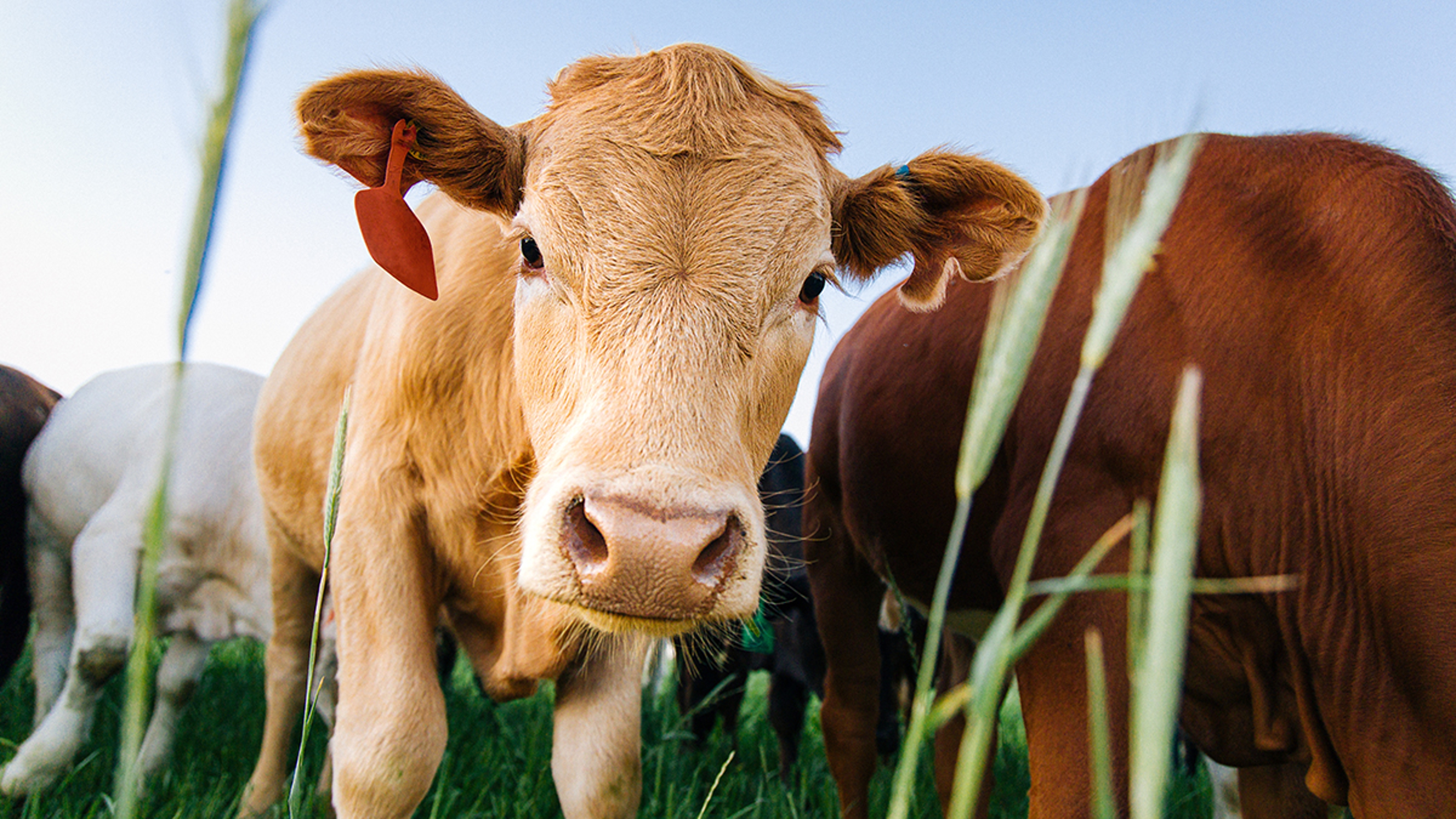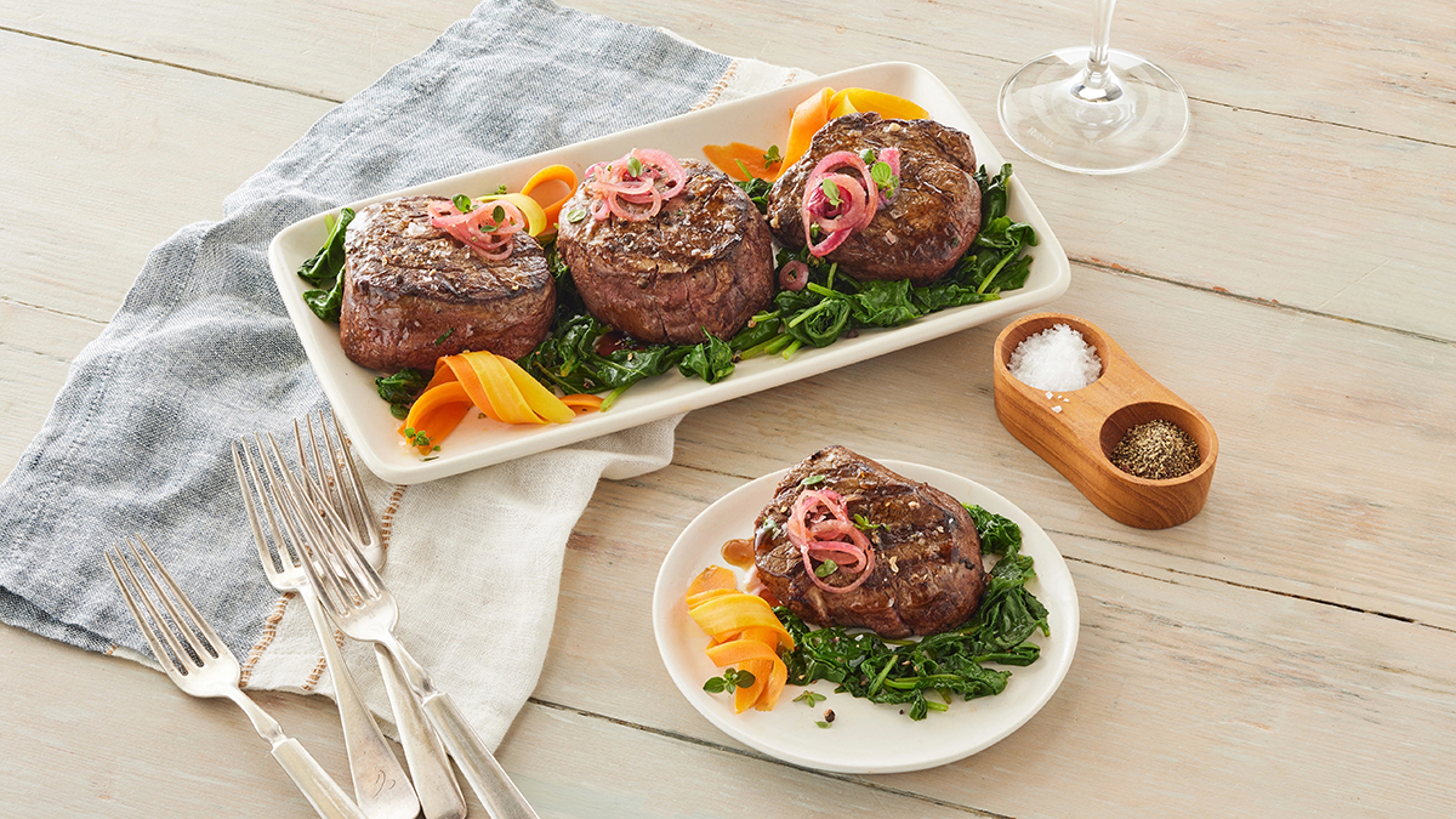What Are the Advantages to Eating Grass-Fed Beef?
Well, for starters, the cows are happier from eating grass.
Jun 03, 2024
The sound and smell of a fresh steak hitting the grill are nearly irresistible — after all, the sizzle, flash, and mouth-watering aromas have tempted our species for millennia. Red meat, in all its manifestations, makes for a sure-shot meal almost every time.
But if you were to peer at the history of the meat cuts sizzling atop the grill, your enthusiasm might wane.
How are cattle raised?
Conventional beef suffers from a number of shortcomings, nearly all of them stemming from the conditions feedlot cattle are raised. Commercial cattle are typically stuffed with hormones to force them to grow artificially fast, antibiotics to counteract the disease-prone environments they're raised in, and grain to fatten them up for sale.

It wasn't always that way.
American beef once came from cows raised entirely on pastures where they ate grasses and native plants as ruminants have for millions of years. But in the 1950s, industrialization and a growing appetite for meat led beef producers to turn to more artificial methods for raising cattle. The result was more meat but of lower quality.
Today, "grain-fed" refers to cattle that spend much of their lives in a crowded feedlot, gorging on, you guessed it, grain until it's time for slaughter. The result is a less healthy and more morally ambiguous meal. Luckily, it's not hard to find naturally raised cattle today, if you know where to look.
You'll find the best grass-fed beef from cattle that spent their lives grazing calmly and quietly in pastures and fields. This beef — now available at Vital Choice — offers all the nutrients and quality without the downsides of industrialization.
Why is grass-fed beef better for you?
Red meat, even more than many other animal proteins, offers a complete package of nutrients. Meat is a complete protein, which means it contains every one of the nine essential amino acids our bodies need. Red meats like beef include a range of crucial minerals like iron, zinc, and selenium, as well as vitamins A, B6, B12, D, E, some healthy fats like omega-3s, and important antioxidants.
Feedlots, which fatten cattle on grain and silage, lead to meat with a far less healthful ratio of omega-3 to omega-6 fatty acids. Cattle that spend much of their lives in feedlots miss out on a number of crucial but often overlooked nutrients, the result of a diet that's heavy in corn and wheat and lacking the diverse natural plants they normally eat. One study comparing grain-fed beef to grass-fed beef shows that feedlot cattle have less beta-carotene, less vitamin E, and fewer healthy fatty acids than their grass-fed counterparts.
Beta-carotene is a precursor to vitamin A, best known for its role in eye health, but also involved with the immune system and cell reproduction. In the eye, vitamin A is used to make rhodopsin, a light-absorbing protein that allows our eyes to send signals to the brain to allow us to see. Because of their grain-heavy diet, feedlot cattle miss out on much of the vitamin A that grass-fed cattle receive. If you're eating grass-fed, you can actually see the presence of beta-carotene and other carotenes in your meat: The orange-colored compounds tint the fat marbling orange or yellow — an easy visual cue your food is full of these nutrients.
Grass-fed beef has all your healthy fats
Those marbled veins point to another key distinction between grain- and grass-fed beef. Fat is a key component of any good cut of beef, but savvy eaters know there's an important nuance to these nutrients.
Many fats perform key roles within our bodies, and it's important we get enough of them to be healthy. Grass-fed beef contains a higher proportion of these healthy fats than feedlot beef, including critical omega-3s and other fatty acids. Grass-fed cattle also beat grain-fed when it comes to the balance of omega-3s to omega-6s — an important ratio that studies link to positive health outcomes.

Omega-3 fatty acids are critical components of our bodies, carrying out basic cellular functions in the eyes, brain, joints, and more. Studies link higher levels of omega-3s to improved cardiovascular health, better brain function, healthier aging, and more. Our bodies don't make enough omega-3s on their own, so we need to get them from our diets. Fish and other seafood are the best sources of these nutrients, but grass-fed beef and other healthy meats contain omega-3s, as well.
Omega-6, a molecular cousin to omega-3, is another fatty acid that is important for health. But while we need omega-6s, research shows that too many of them, and not enough omega-3s, can actually be a bad thing. A healthy ratio is somewhere around one to four times as many omega-6s as omega-3s. But the typical American diet today sits at about 11 to 30 times as many.
A higher omega-6/3 ratio is linked to an increased risk of cardiovascular disease, cancer, and inflammatory diseases. In 2010, researchers compared fatty acids in both grain-fed and grass-fed cattle and found big differences in their omega-6/omega-3 ratios. Feedlot cattle had around 7.5 times as many omega-6s as omega-3s, the authors report. That's compared to just 1.5 times as many in grass-fed cattle.
Grass-fed beef beats out commercial beef in another important fatty acid as well: conjugated linoleic acid (CLA). This healthy fat is linked to a reduction in arterial plaque build-up, as well as a lower risk of diabetes. And a large body of evidence suggests it might help with weight loss, too. Studies show CLA reduces body fat and increases lean body mass.
These differences aren't just in the meat. Milk from grass-fed cows beats milk from grain-fed hands-down. Grass-fed cows produced milk with an omega-6/omega-3 ratio of about 1:1, versus nearly 6:1 from grain-fed cows. CLA levels in grass-fed cows' milk were about double those of grain-fed cattle as well.
And as for the narrative that fats, and saturated fats in particular, pose an existential threat to our health, more recent evidence offers a compelling rebuttal. Many saturated fats, like stearic acid, found in abundance in grass-fed beef, have no impact on markers of health like cholesterol and play important roles within our bodies. A 2010 meta-review analyzing more than 20 individual studies found no significant evidence to support the notion that dietary saturated fat is associated with a higher risk of cardiovascular disease or coronary heart disease.
Grass-fed beef is what's for dinner
The plethora of health benefits aside, grass-fed beef has another unimpeachable advantage over standard feedlot-raised beef. While the conditions on a feedlot are subpar, to say the least (and frequently much worse than that), grass-fed cattle are typically raised in open pastures, ranging free for much of their lives. It makes choosing grass-fed an easy ethical decision.
The ranchers Vital Choice gets their grass-fed beef from are at the forefront of sustainable cattle ranching, long before “sustainability” became a buzzword. Many of them utilize freshwater aquifers that are free of environmental pollution, helping make their vast pastures the perfect setting for raising cattle.
The small family farms that Vital Choice has partnered with meticulously care for both their herds of Angus-based cattle and the treasured pastures they graze on. The cattle spend their entire lives grazing exclusively on this nutrient rich grass and are 100% grass-fed and grass-finished and are never fed corn or grains. The cattle are free of any antibiotics, steroids, or added hormones. The end product is a rich and tender beef, leaner than its grain-finished counterpart and high in omega-3 fatty acids.





.jpg?q=70&width=3840&auto=webp)

